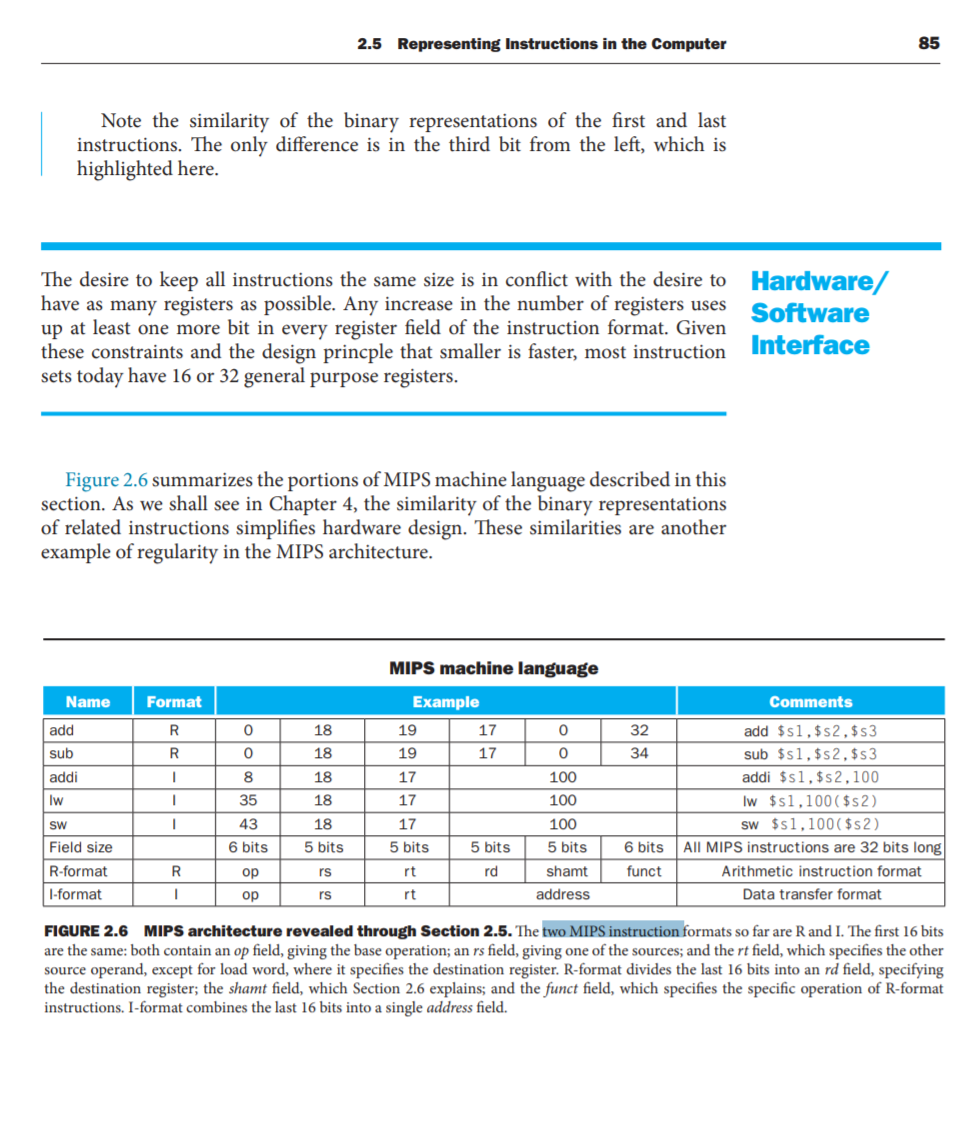

Iformat example beq mips 32 bit#
Pseudo-direct addressing Which of following statements regarding instruction format is NOT correct? Since the MIPS is a 32 bit ISA, each instruction must be accommodated within 32 bits. The Effect of FPU Operations on the Format of Values Held in FPRs. R-type instructions refer to register type instructions. Always possible? Unique? R & I-format Datapath The advanced datapath ADDI instruction LW instruction SW instruction BEQ instruction I-type instruction simulator. Each MIPS instruction must belong to one of these formats. R-type Instruction Format op rs rt rd shamt funct op. The classification below refines the classification according to coding format, taking into account the way that the various The Reg1 and Reg2 fields encode the source and destination registers (MIPS has 32 registers = 2 5), while the Immediate field encodes any immediate value. R Instructions R instructions are used when all the data values used by the instruction are located in registers. (B) In I format instructions like lw and sw, The MIPS computer can address 4 Gbyte of memory, Format of the Jump Instruction The format for set instructions is the same as for MIPS. Instruction Subsets of MIPS III and MIPS IV Processors. Jump Instructions Ideally, MIPS would have only one instruction format (for simplicity): unfortunately, we need to compromise Define new instruction format that is partially consistent with R-format: First notice that, if instruction has immediate, then it uses at most 2 registers. Used by all arithmetic and logical instructions I format - Uses two register operands and an Instruction Format. Pseudo-direct addressing Which of following statements regarding instruction format is NOT correct? The MIPS ISA has divided the entire set of instructions into three categories (keeping aside the floating point instructions): R-Type instructions I-Type instructions J-Type instructions R-type instruction format: The R-type format mainly consists of instructions capable of performing data processing operations. The J instruction jumps no matter the case or condition.% mips-linux-gnu-objdump -x libinet. BNE and BEQ only jump instructions if a certain condition is met. If the condition is not true, we just continue with the instructions sequentially.Īnother instruction often used with conditions is J (Jump).


The idea is that we branch (or jump instructions) if the condition is true. This idea of branching may be a little counterintuitive to the way we usually think of if statements. The two main instructions used for conditionals are BEQ (Branch on Equal) and BNE (Branch on not Equal). A “branch” transfers control to another part of the program (usually close to the current location).īEQ and BNE follow the below format: BEQ operator 1, operator 2, branch locationīNE operator 1, operator 2, branch location However, if you’re used to programming with languages like C#, PHP, or Python, you’ll find that the syntax for dealing with “if…else…” statements is quite different

Iformat example beq mips code#
What happens when you only want to execute a particular line of code if certain conditionals are met? Like make programming languages, MIPS have a way of dealing with these “if… else…” conditions.


 0 kommentar(er)
0 kommentar(er)
